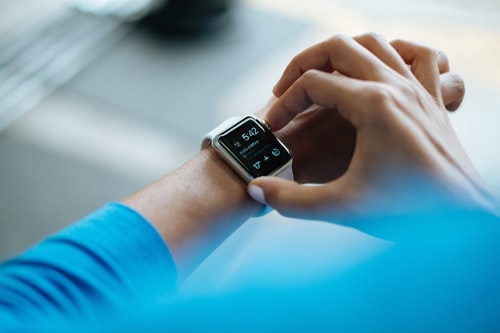According to the 2020 National Health Interview Survey (NHIS), 30% of Americans have refused medical care because of related costs - that’s nearly 1 in every 3 of us. As the Covid-19 pandemic saturated the globe, in the U.S., we saw the dangerous trend of reluctant and neglectful attention to personal healthcare for fear of additional expenses on quickly thinning wallets. As many Americans make a slow financial recovery from the pandemic, we see this trend continuing. However, amid the stress of financing healthcare, a hero is coming into focus.
Financial technology has been a trendsetter, innovator, and disruptor since its kickstart in the 2008 global financial crisis. Fintech is a disturber of the norm, a promoter of democratized wealth, and a scrappy technological leader refusing to sacrifice diversity, inclusion, and financial resilience for all. As fintech seeps into neighboring industries like insurance and healthcare, it spreads revolutionary payment options, information security, and efficient systems that allow patients to get help fast.
The healthcare industry has, in some ways, been slow to adopt new technology - especially payment technology. However, the success that other branches of healthcare have seen in implementing innovative functionality from Web 3.0, virtual reality, AI, and machine learning have been an encouragement for the adoption of fintech systems and practices for the sustainable future of healthcare.
With financial technology springing up and growing strong in the healthcare space now, patients and providers are already feeling the benefits. Immediate care can be funded, confusing payments and processes are made simple, and patient data is secure.
From Paper to Pixel
When you think of the payment process in the healthcare sector, you may roll your eyes. In the past, the process was done largely in person, with hard copies and paper money. Bills, receipts, and records were easily lost or misplaced, documentation is not up-to-date, and there was too much room for human error. Payment for healthcare services can involve several parties to complete the transaction. It’s often messy, convoluted, and inefficient for everyone involved.
But FinTech says, “we can fix that”.
By adopting a digital payment process, much of the human error is removed. Records are accurate and current, bills and receipts are accessible online, and payments can be made without contact, which has been a major concern throughout the Covid-19 pandemic. The process is largely automated to guide individuals through a seamless payment in much less time than it used to take.
A Suite of Solutions
Along with electronic billing and online access to payment arrangements and patient data, fintech has brought a variety of new ways to afford healthcare services. For the patient, the financial burden is reduced, and for the payors and providers, there is less friction.
Online Crowdfunding Platforms
Even if you’re lucky enough to have healthcare benefits, remaining out-of-pocket fees can be increasingly costly and unpredictable. By utilizing financial technology, patients can now pay for healthcare costs in new ways. Some use online crowdfunding platforms to supplement the cost of care, while others seek health lending options. In fact, about 50% of US citizens utilize healthcare loans.
Instant Access to Earnings
If you find yourself in the unfortunate predicament of not being financially prepared for a healthcare emergency or out-of-pocket cost, there’s another option: On-Demand Pay.
Workers with the on-demand pay solution can access the pay they’ve earned on the same day they’ve earned it via a mobile app. There’s no need to wait until payday, and it’s not risky like predatory payday loans with insanely high rates. The financial wellness solution doesn’t even have a rate- you can access your earnings for a transaction fee equivalent to the cost of an ATM withdrawal fees.
Online Financial Management Applications
Online financial management applications are evolving rapidly and often include options for healthcare payment, too. If you’re looking for a proactive way to plan and save for when a medical emergency does arise, health savings accounts provide a simple way of preparing. These accounts allow an individual to set up savings and control the amount of money that goes into the account. Because the account is specifically for healthcare costs, it comes with added benefits like tax breaks.
Safe and Secure
Blockchain technology is another revolutionary innovation to come from the financial tech industry and impacted healthcare in recent years. Blockchain is not a payment option, but it does protect the payment process and related data. This technology makes it difficult for patient data to be hacked and stolen, lost, or altered because it’s not stored in one place but rather across a network of secure systems. There’s an incredible volume of data attached to the healthcare industry, and that information is private, so moving, storing, and using that data in smart and secure ways is crucial. As healthcare adopts blockchain security, it increases the likelihood of HIPAA compliance, GDPR compliance, and similar regulations.
In a world where so many of us freeze in financial fear when a medical emergency ambushes us, we need a disruptive innovator like fintech. Financial technology continues to gain momentum in the healthcare industry and benefits patients, payors, and providers alike.
Navigating payment processes is a breeze, data is secure, transactions are contactless, and payment options are available. The solutions are there, and more are coming. The question is now: when will you adopt the tools and practices of financial technology and the benefits it brings to your health?

